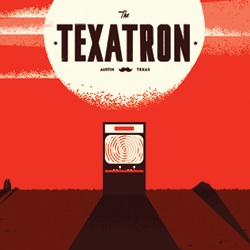TRIPLE ROCK: X-MEN ORIGINS: WOLVERINE, OR BULLET FROM A LOGAN
Every step that Wolverine takes toward you is the coiling of spring. His is a menacing swagger, but until the schnick, a sort of calm cloaks the danger. For his foes, his approach is that moment after you’ve leapt from the cliff top, before you’ve dashed your head on the rocks below; the holding of your breath in the second before the world explodes. Wolverine twitches a beat then boom, the spring is sprung and nobody is left standing.
This sense of tension and release is ably communicated by current videogame blockbuster X-men Origins: Wolverine. Its developer, Raven, has relished the chance to illustrate, in unflinching detail, the more gruesome results of the mutant’s cloudy disposition.
This Wolverine brings with him a typhoon of bloodletting, which starts with a 500-foot fall from a helicopter onto a cushioning jungle rebel, and ends fifteen hours and close to 2000 kills later. This is a Wolverine who pulls the head clean from the sunken neck of an ancient stony monster; who punches through a windshield, in one motion hauling and eviscerating the blanching driver from his seat. This is a Wolverine who repairs his own bullet wounds like Master Chief recharges his shields.
But for all his schnickity bombast, Wolverine is a character that lacks the crucial tool in any action game hero’s arsenal: a gun. Videogaming’s critics mistakenly suppose that the medium’s obsession with guns is through choice and not necessity, that it’s the boyhood fixation of an adolescent industry infatuated with tits and cars and bullets. But that’s only a half-truth. Shooting has been our lot ever since Space War fired its first missile across the PDP-1’s highlighter pen green solar system. If shooting stuff were gaming’s primary theme merely because of immaturity, surely we would have grown out of it, forty-seven years on?
No, the truth is more practical in nature. Aiming and firing projectiles at things is the most natural activity within a videogame because pointing and shooting at things is the easiest way to interact with a game world, near and far. Guns, or perhaps more accurately, bullets are important because they extend the player’s interactive reach all the way across and into the screen. Guns empower us in immediate and pleasing ways as, with them, we create a cause and effect firework display across our interactive spaces. With a bullet (or an arrow, slingshot, boomerang or whatever else is tucked away in Link’s backpack) we can take out an enemy spider standing directly in front of us just as easily as flicking a wall-mounted switch a hundred metres away. What other object from our world offers the videogame such endless scope, flexibility and immediate usefulness?
So an action game whose hero is restricted from using guns presents its maker with a conundrum: how to give the player a pleasing reach into the game world without resorting to magical spells. Raven gets around the problem with no small amount of ingenuity reworking convention by turning Wolverine himself into a speeding bullet. And what better evolutionary endgame for a man who exemplifies incoming aggression?
Tapping and holding one button extends a blue targeting line to the nearest enemy. Tapping a second button then shoots Wolverine into the air, hurtling him towards the target with all of the speed and dull purpose of an arrow. It’s an inspired system, allowing the player to move at speed around the level, flitting from enemy to enemy through the air, impacting far-flung areas of the environment in an instant. In one moment late in the game, claws extended, you smash clean through the skull of a fifty-foot giant robot, killing it in an instant, Wolverine literally making the headshot. Bullets never dressed so well.
The system has other, secondary benefits, allowing the player to cross giant chasms that Wolverine’s standard jump would have no hope of clearing. During boss fights, a simple button combination that auto-launches you towards your foe can shake off the most dizzying disorientation. Then, when fighting helicopters, it’s possible to fly at the cockpit from the ground, continuing the fight in the air at close proximity. If this were a fight in which you had a rocket launcher or bazooka, the action would be necessary distanced and removed and arguably less exciting because of it.
One of gaming’s great challenges over the next ten years will be to find tools for that offer players the same sense of instantaneous and far-reaching cause and effect impact that a gun provides. Games like Portal have already made strides toward that end, giving us a tool that offers all of the benefits of a traditional projectile weapon, but with a perfectly passive projectile. In Valve’s subversive masterpiece we manipulate the environment around us using the same reticule and projectile metaphor of a gun but without its inherent violence. Instead, success came from turning the violence of others against them, by redirecting lasers through walls to strike their shooters, passive aggression in the cross hairs.
Likewise, X-men Wolverine, in its own, brash comic book manner, achieves a third way through the problem. The system mightn’t be particularly nuanced but as you streak through the eye of a giant robot, short circuiting its brain with your claws before emerging from the back of its head into the noonday sun, its one whose existence is hard to knock.
[Simon Parkin is a freelance writer and Flash game producer from England. Triple Rock aims to pick out, discuss and celebrate a worthwhile or interesting mechanic from an unashamedly mainstream videogame.]
See more posts about: Offworld Originals, Triple Rock, Xbox 360






